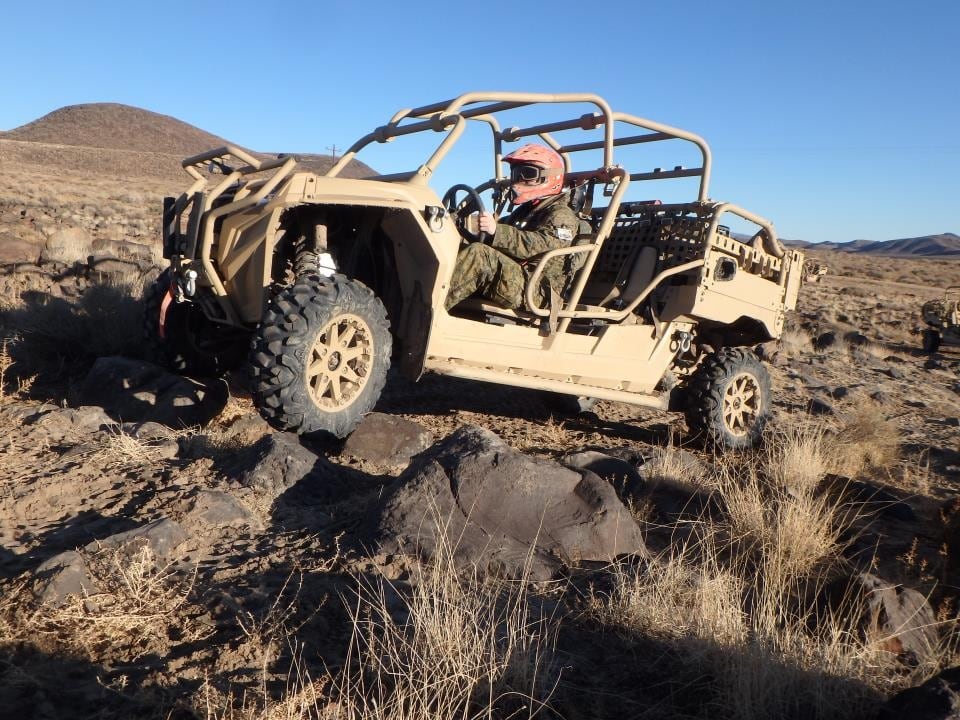Get ready for off-roading.
Infantry Marines are getting a four-seat all-terrain vehicle early next year to carry several days' worth of supplies, evacuate the wounded and many more tough tasks.
The Marine Corps plans to field 144 utility task vehicles to infantry regiments between February and April 2017, said Emanuel "Manny" Pacheco, a spokesman and congressional liaison for PEO Land Systems Marine Corps.
Until now, forward deployed infantry Marines have had to carry all of their gear on their backs while operating in remote locations, but the utility transport vehicle fits onto the MV-22B Osprey so it can go into the field with infantry units, Pacheco told Marine Corps Times.
"The vehicle will provide logistics support to ground combat units that are operating independently across dispersed areas, while conducting distributed helicopter-borne and tiltrotor operations," Pacheco said.

The Marines are fielding 144 utility task vehicles to infantry units.
Marine expeditionary units and Special Purpose Marine Air Ground Task Forces will use the vehicles when deploying in austere environments, he said. Each infantry regiment will have 18 of the four-seat vehicles, which can be driven by a single Marine.
This is the first such vehicle designed specifically for infantry Marines, Pacheco said. The Marine Corps has another all-terrain vehicle, but it is for specialized tasks, such as towing howitzers.
The fact that one utility task vehicle can fit on an MV-22B Osprey is critical because the Marine Corps can use Ospreys to launch a unit more than 100 miles from shore to avoid enemy cruise missiles and other defenses that can destroy ships and landing craft.
Ospreys can fly at 240 knots and they are able to refuel in midair, allowing them to carry Marines up to 6,000 miles in 24 hours, compared with most helicopters, which typically have a maximum range of 200 miles.
The Marine Corps has used Ospreys to rapidly move humanitarian relief supplies, such as in April following two earthquakes in Japan. It's also used to respond to crises quickly, such as when a quick reaction force deployed from Sigonella, Italy, in July 2014 for the evacuation of the U.S. embassy in Tripoli.




